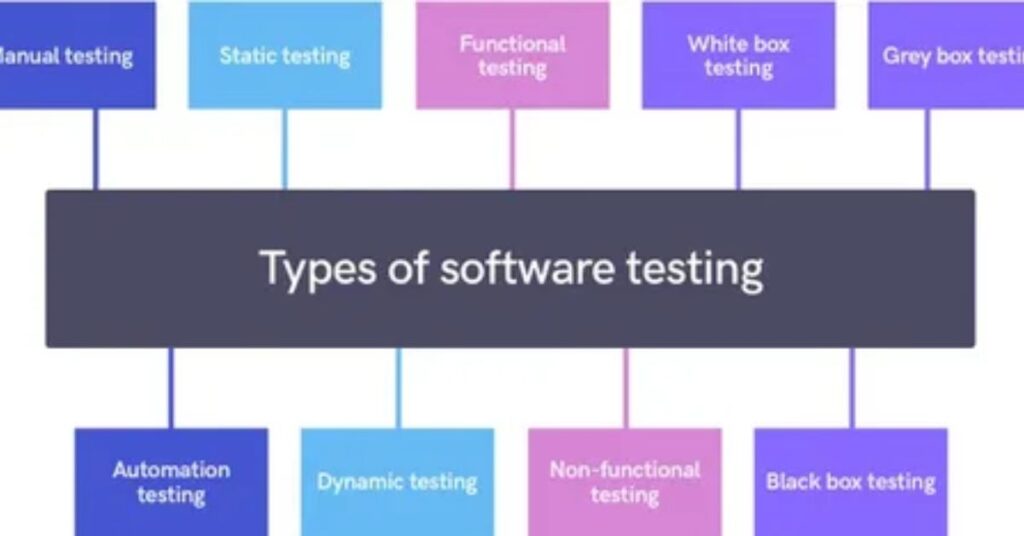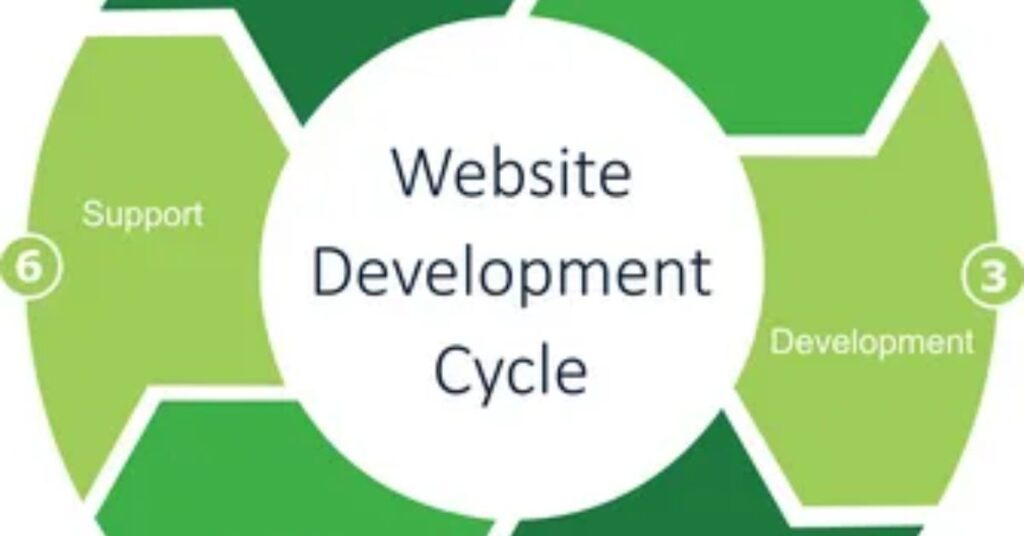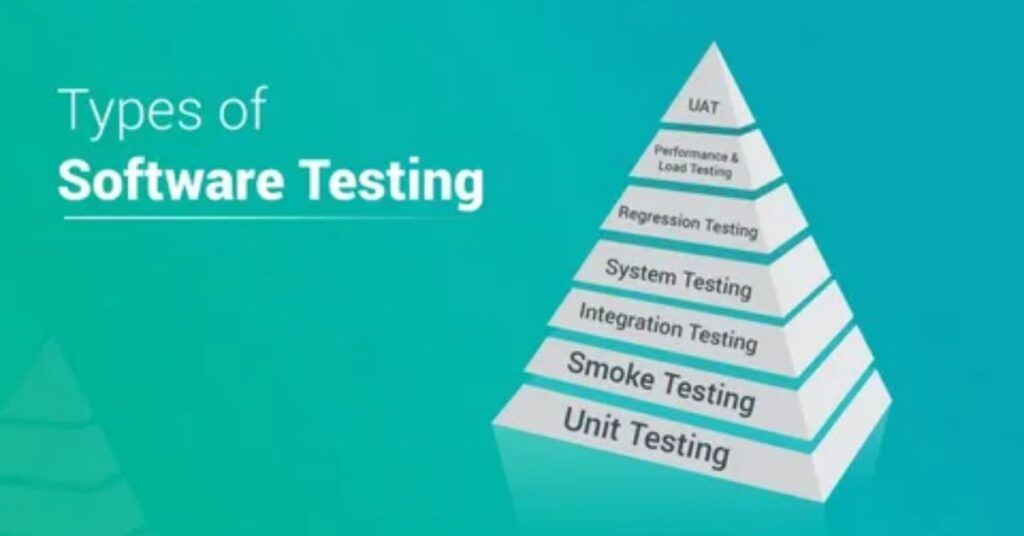Testing in Zillexit Software involves thoroughly evaluating every feature to identify and fix bugs, ensuring the software meets and exceeds quality, functionality, and reliability standards. This process upholds Zillexit’s commitment to delivering top-tier software solutions. It is essential for improving user experience and maintaining high performance across different environments.
Discover how Zillexit Software revolutionizes quality assurance with its comprehensive testing approach. From unit tests to system evaluations, uncover the secrets behind delivering reliable, high-performing software. Join us on a journey through the meticulous process that ensures Zillexit products meet and exceed user expectations.
Testing in Zillexit Software involves thoroughly evaluating every feature to ensure quality, functionality, and reliability. This process identifies and fixes bugs, enhances user experience, and confirms that all software products meet or exceed user expectations. It’s a critical step in delivering top-tier software solutions that stand the test of time.
Understanding the Basics of Testing

Software testing systematically evaluates a software product to ensure it meets required standards and fulfills its intended purpose. This crucial step in the software development lifecycle identifies errors, gaps, or missing requirements. By rigorously testing, Zillexit Software can deliver high-quality, reliable software that performs efficiently in all expected environments.
The primary goal of testing is to confirm the software’s high quality and dependability. Objectives include identifying and fixing bugs, verifying feature completeness, ensuring reliability and security, and assessing performance under various conditions. This comprehensive approach improves overall software quality and provides a more satisfactory user experience.
Definition of Software Testing
Software testing systematically evaluates a software product to ensure it meets required standards and fulfills its intended purpose. This process involves identifying errors, gaps, or deviations from the expected requirements. By thoroughly testing, software developers can deliver high-quality, reliable products that perform efficiently in all intended environments.
Read this blog: How to Check Honor rdr2 on PC ?
Goals and Objectives of Testing in Software Development

The primary goal of software testing is to ensure the software is of high quality, reliable, and performs efficiently in all expected environments. This includes identifying and fixing bugs, verifying feature completeness, and ensuring the software meets user expectations. Additionally, testing aims to confirm that the software is stable, secure, and capable of handling errors gracefully without crashing.
Key objectives include assessing the software’s performance under various conditions, such as stress and scalability testing. By rigorously testing, the overall quality of the software product is improved, contributing to a more satisfactory user experience. This comprehensive approach ensures the software meets the necessary standards and provides a reliable and efficient solution for end users.
What is Testing in Zillexit Software? Explore its Types

Testing in Zillexit Software involves a thorough evaluation of each software feature to ensure it meets quality, functionality, and reliability standards. This process identifies areas of improvement, fixes bugs, and enhances the user experience. The ultimate goal is to deliver top-tier software solutions that efficiently meet customer needs and stand the test of time.
Types of Testing in Zillexit Software
Unit Testing
Unit Testing involves checking the smallest parts of the software, known as ‘units,’ to ensure they function correctly on their own. This early stage of testing helps catch and fix issues promptly, making the overall software more reliable and easier to maintain. Tools like JUnit and NUnit are commonly used to automate these tests.
Integration Testing
Integration Testing examines how different software components work together. It ensures that individual parts, when combined, operate smoothly and efficiently. Tools such as Postman and SoapUI help test the interaction between components, while TestRail and qTest assist in managing these tests to ensure comprehensive coverage.
System Testing
System Testing evaluates the software as a whole to ensure it meets all specified requirements. This stage involves both Functional Testing, which checks if features work as intended, and Non-functional Testing, which assesses performance under various conditions. Tools like Selenium and LoadRunner are used to facilitate these tests.
Acceptance Testing
Acceptance Testing validates the software against business requirements to ensure it meets the client’s needs. End-users play a crucial role in this stage by testing the software to confirm it is user-friendly and effective in real-life scenarios. This phase ensures the software delivers the expected value to its users.
Definition and Purpose
Definition of Software Testing
Software testing is the systematic evaluation of a software product to ensure it meets the required standards and fulfills its intended purpose. This process involves identifying any errors, gaps, or deviations from the expected requirements to ensure the software operates as expected in various conditions.
Purpose of Software Testing
The primary purpose of software testing is to ensure the software’s high quality, reliability, and efficient performance. This includes identifying and fixing bugs, verifying feature completeness, and ensuring the software meets user expectations.
Software testing aims to confirm the software’s stability, security, and ability to handle errors gracefully without crashing, ultimately providing a satisfactory user experience.
Read Also This: What is BBWC on My PC?
Tools Used in Unit Testing
Unit Testing, a critical phase in software development, employs various tools to ensure the reliability and functionality of individual software components. These tools automate the testing process, allowing developers to verify the accuracy and performance of each unit of code efficiently. Here are some commonly used tools:
- JUnit: A popular framework for Java programming language, JUnit facilitates the creation and execution of automated tests, helping developers ensure that each unit of their Java application behaves as expected.
- NUnit: Similar to JUnit but tailored for .NET applications, NUnit provides a framework for writing and running automated tests in C#, VB.NET, and other .NET languages, ensuring robust unit testing capabilities.
- PyTest: For Python developers, PyTest simplifies writing and running tests by supporting various testing methodologies and offering features like fixtures and parameterization to enhance test flexibility and efficiency.
- Mocha: Designed for JavaScript, Mocha is a flexible testing framework that runs on Node.js and the browser. It allows developers to write asynchronous tests, define suites and hooks, and generate detailed test reports.
- RSpec: Commonly used in Ruby on Rails projects, RSpec enables behavior-driven development (BDD) by providing expressive syntax and powerful features for writing tests that focus on the behavior of the software.
These tools streamline the unit testing process, enabling developers to detect and resolve issues early in the development lifecycle, thereby ensuring the overall quality and reliability of the software product.
Integration Testing
Integration Testing is a crucial phase in software development that evaluates how various components of a software system work together. This testing ensures that individual units or modules integrate seamlessly and function correctly as a whole. The primary goal is to verify the interactions and dependencies between integrated components to identify and rectify any inconsistencies or errors.
Purpose of Integration Testing
Integration Testing serves several purposes:
Identifying Interface Defects: It detects issues arising from the interaction between integrated modules or services, ensuring that data flows correctly and interfaces operate as expected.
Ensuring System Stability: By testing the integration of modules, Integration Testing confirms that the entire system operates reliably under normal and adverse conditions, such as heavy loads or unexpected inputs.
Validating End-to-End Functionality: It validates end-to-end functionalities that span across multiple components, ensuring that the software meets business requirements and user expectations.
Detecting Performance Bottlenecks: Integration Testing helps uncover performance bottlenecks or inefficiencies that may arise when multiple modules interact, allowing for optimization before deployment.
Tools and Techniques
Several tools and techniques facilitate Integration Testing:
- Postman: Used for testing APIs and web services, Postman allows developers to send requests, validate responses, and automate tests for API integration.
- SoapUI: Ideal for testing web services, SoapUI provides a comprehensive environment to create and execute automated functional, compliance, and security tests.
- TestRail: A test management tool that helps organize and manage test cases, plans, and runs for integration testing, ensuring comprehensive coverage and traceability.
- qTest: Enables test case management, execution, and reporting, facilitating collaboration among team members during integration testing phases.
Integration Testing ensures that the integrated software components function harmoniously, delivering a reliable and cohesive software system that meets performance, functionality, and reliability expectations.
How Different Components are Tested Together while Integration Testing?
Integration Testing involves verifying how different software components, modules, or services interact and function collectively within the software system. This testing phase aims to ensure that integrated components communicate effectively, share data correctly, and perform their intended functions without errors.
Verification of Component Interactions
During Integration Testing, each component’s interaction with other components is scrutinized to validate that data transfers smoothly and accurately.
This process ensures that interfaces between modules or services adhere to predefined specifications and standards, preventing integration-related issues from affecting overall system functionality.
Validation of Integrated Functionality
Integration Testing also focuses on validating the integrated functionality of the software system as a whole. By testing how different components collaborate to achieve specific tasks or processes, testers can confirm that the entire system meets functional requirements and performs seamlessly under varying conditions.
This comprehensive approach helps identify and resolve integration-related defects early in the development lifecycle, ensuring a robust and reliable software product.
Ensuring the Software as a Whole Meets the Requirements

System Testing plays a crucial role in software development by evaluating the entire software system to ensure it meets all specified requirements and functions as intended in real-world scenarios. This testing phase focuses on validating both the functional and non-functional aspects of the software to confirm its reliability, performance, and usability.
Functional Testing for Requirement Validation
Functional Testing within System Testing verifies that the software performs its intended functions according to the defined requirements.
This includes testing individual features, workflows, and user interactions to ensure they meet user expectations and business needs. By simulating user actions and scenarios, testers validate that all functionalities operate correctly and produce expected outputs.
Non-Functional Testing for Performance and Usability
Non-Functional Testing in System Testing assesses the software’s performance, usability, reliability, and security aspects. Performance Testing evaluates how the software performs under various loads and conditions, ensuring it can handle expected user traffic without degradation.
Usability Testing focuses on the user interface and user experience, ensuring the software is intuitive, accessible, and meets usability standards.
By conducting thorough System Testing, software developers and testers can confidently confirm that the software as a whole meets all specified requirements, performs reliably in diverse environments, and delivers a satisfactory user experience. This comprehensive validation process mitigates risks and ensures the software’s readiness for deployment and use.
Different Approaches and Methodologies
System Testing encompasses various approaches and methodologies to ensure comprehensive validation of the software’s functionality, performance, and usability before deployment. These methodologies are tailored to address different aspects of software quality assurance and ensure that the software meets specified requirements and user expectations.
Functional Testing Approach
Functional Testing within System Testing focuses on verifying that each function and feature of the software performs as intended according to defined specifications. This approach includes testing individual modules, user interfaces, and integrated workflows to validate their correctness and reliability. Test cases are designed to simulate real-world scenarios to ensure that all functional requirements are met without errors.
Non-Functional Testing Methodologies
Non-Functional Testing in System Testing evaluates aspects such as performance, reliability, usability, and security of the software. Performance Testing assesses how the software performs under varying loads and stress conditions to ensure it meets performance benchmarks and can scale effectively. Usability Testing focuses on user interface design and user experience to confirm that the software is intuitive, accessible, and meets usability standards. Security Testing identifies vulnerabilities and ensures that the software safeguards sensitive data and resources from unauthorized access.
Integration of Different Testing Approaches
System Testing integrates these various testing approaches and methodologies to provide a holistic assessment of the software’s quality and readiness for deployment. By combining functional and non-functional testing techniques, testers can uncover defects, assess risks, and validate that the software meets all specified requirements and quality standards. This comprehensive testing approach helps mitigate risks, improve software reliability, and deliver a robust solution that meets both technical and user-driven criteria.
Validation against Business Requirements
Acceptance Testing is crucial for validating that the software meets the specified business requirements and objectives before it is deployed to end-users. This testing phase focuses on ensuring that the software delivers the expected functionality and value to stakeholders, aligning closely with the organization’s goals and user needs.
Role of Business Requirements in Acceptance Testing
Business Requirements serve as the foundation for Acceptance Testing, defining the criteria against which the software’s performance and capabilities are evaluated. Test cases are designed based on these requirements to verify that the software meets functional, performance, and usability expectations set by stakeholders and end-users.
Stakeholder Involvement and Feedback
Acceptance Testing involves active participation from stakeholders and end-users who provide feedback on the software’s usability, functionality, and overall suitability for their business needs. Their involvement ensures that the software aligns with operational workflows, meets regulatory requirements, and supports strategic objectives.
By conducting rigorous Acceptance Testing, organizations can confidently validate that the software meets all defined business requirements, addresses user needs, and delivers the expected value, thereby mitigating risks and ensuring successful deployment and adoption in real-world environments.
Best Practices to Overcome These Challenges
System Testing often presents challenges that can impact the efficiency and effectiveness of the testing process. Implementing best practices helps mitigate these challenges and ensures thorough validation of the software’s functionality, performance, and usability.
Prioritization of Test Cases
Prioritize test cases based on criticality and risk factors to focus on testing functionalities that are essential for business operations and user experience. This approach ensures that high-impact areas are thoroughly tested, reducing the likelihood of critical defects slipping through the testing phase.
Automation of Repetitive Tasks
Automate repetitive testing tasks such as regression testing, performance testing, and data validation to save time and effort. Test automation tools and frameworks, such as Selenium for web applications or JUnit for unit testing, enable rapid execution of tests and consistent validation of software functionality across different environments.
Use of Test Management Tools
Utilize test management tools like TestRail or qTest to organize test cases, manage test execution, and track defects efficiently. These tools provide a centralized platform for collaboration among testing teams, stakeholders, and developers, ensuring clear visibility into testing progress and results.
Adoption of Agile and Continuous Testing Practices
Adopt Agile methodologies and continuous testing practices to integrate testing activities seamlessly into the software development lifecycle (SDLC). Continuous Integration/Continuous Deployment (CI/CD) pipelines automate the build, test, and deployment processes, enabling faster feedback loops and early detection of defects.
Cross-Platform and Cross-Browser Testing
Conduct thorough cross-platform and cross-browser testing to validate that the software performs consistently across different operating systems, devices, and web browsers. This practice ensures compatibility and provides a seamless user experience across diverse environments.
Collaboration and Communication
Encourage collaboration and open communication between testing teams, developers, and stakeholders to clarify requirements, address issues promptly, and align testing efforts with business objectives. Regular meetings, status updates, and feedback sessions facilitate smoother coordination and problem resolution.
By implementing these best practices, organizations can enhance the effectiveness of System Testing, improve software quality, and mitigate risks associated with software defects and performance issues. These proactive approaches contribute to delivering reliable, user-friendly software solutions that meet business requirements and exceed customer expectations.
Conclusion
Testing in Zillexit Software is integral to ensuring the delivery of high-quality, reliable software solutions that meet and exceed user expectations. By rigorously evaluating every aspect of the software through various testing phases such as unit testing, integration testing, and system testing, Zillexit ensures that its products are robust, secure, and perform seamlessly in diverse environments.
Zillexit’s dedication to quality is evident in its comprehensive approach to testing, which includes both manual and automated methodologies to detect and rectify defects early in the development cycle.
This commitment not only enhances software reliability but also fosters innovation by leveraging emerging technologies like AI-driven testing and cloud-based solutions to stay ahead in the competitive software landscape.
Frequently Asked Questions
What types of testing does Zillexit Software employ?
Zillexit utilizes a range of testing methods including unit, integration, system, and acceptance testing to ensure software quality.
How does Zillexit ensure its software meets user requirements?
Zillexit conducts thorough testing against specified business requirements to validate functionality, performance, and usability.
What role does automation play in Zillexit’s testing process?
Automation tools are used extensively in Zillexit’s testing to enhance efficiency, consistency, and coverage of tests across its software products.

Sallas: Tech-savvy professional with 5 years in the industry. Skilled in software development, cloud computing, and AI. Known for innovative solutions and teamwork.








